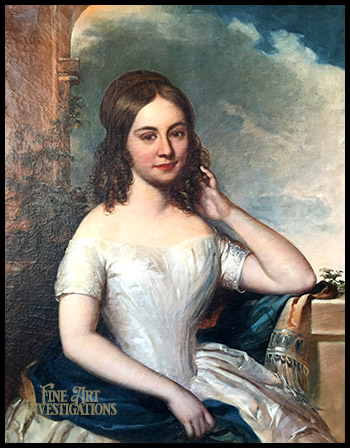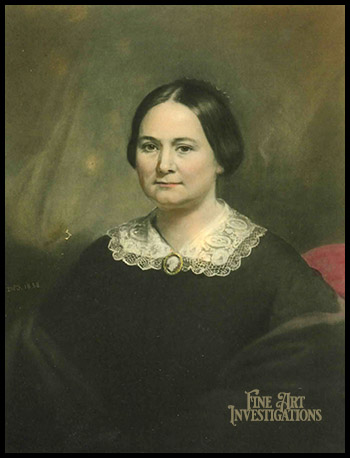Manuel Joachim de Franca
American Artist 1808-1865
Manuel Joachim de Franca was the first-born son of a successful wine merchant from the Island of Madeira, Portugal. At his birth in 1808, the family lived in the capital city of Funchal. For his education, de Franca was sent to Lisbon. Francisco Goya (1746-1828) headed the Royal Art Academy where he studied. In 1826, “when the liberals revolted against the Don Miguel government, he joined the popular movement. When the insurrection was suppressed, he, with a large number of compatriots, was imprisoned and condemned to be shot. Sympathizing friends contrived their escape and smuggled them on board a vessel which landed them in due course safe in Philadelphia.”[1]
Philadelphia was then the young United State’s cultural center and there the 18-year-old artist stayed. He spoke little English but an older artist, Joshua Shaw (c. 1777–1860), an originator of American landscape painting, befriended him. De Franca also studied with Thomas Sully (1783-1872), arguably the finest portrait artist in America of the time, and Sully’s son-in-law John Neagle (1796-1865). Engraver John Sartain (1808-1897) remembered de Franca taught him how to paint figures in oil. The Portuguese artist exhibited his work at the Peale Museum with Joshua Shaw and Emanuel Leutze (1816-1868) and submitted paintings to the American Art Union.[2]

Manuel Joachim de Franca
Mary Elizabeth Lee (Mrs. Robert F. Fleming), 1849
Oil on Canvas, 30 x 35 inches
Private Collection

Manuel Joachim de Franca
Pemela Marr Harrison, 1858
Watercolor after Original Painting
Current Location Unknown
In 1842 de Franca moved to western Pennsylvania with his bride, Mary Mahala Dawson (1807-1886). There, he painted portraits and decorated altars. From Pennsylvania, the couple traveled to Tennessee and Kentucky before settling in St. Louis, Missouri, in 1844. Since its founding in 1764 by French fur traders, St. Louis had always had a continental flavor. De Franca’s European artistic style fit the city well. He quickly became the city’s most popular portrait artist. He founded the Western Academy of Art in 1860 but soon retired due to lung disease. He died in 1865.
Manuel Joachim de Franca was content in his role as the society portrait artist of antebellum St. Louis. He did not seek fame. After his death his name was forgotten. His work can be found at the Addison Gallery of American Art, Brooklyn Museum, Corcoran Gallery of Art, Philadelphia Museum of Art, Chicago Historical Society, Filson Historical Society, Missouri Historical Society, New York State Historical Association, Virginia Historical Society, National Portrait Gallery, and in many private collections. Repeating ovals grace his compositions with old world refinement and charm.
Footnotes:
1. John Sartain, Reminiscences of a Very Old Man, 1808-1897 (New York: D. Appleton & Company, 1900), 143, 175-176, 179; Kate Armstrong [niece of the artist], handwritten manuscript, 1915, Missouri Historical Society Archives in Karen McCoskey Goering, “Manuel de Franco: St. Louis Portrait Painter,” Gateway Heritage, Missouri Historical Society, Volume 3, No. 3 (1983). His niece wrote that de Franca was born in Oporto, Brazil. I chose the version from a man who knew him when he first came to the United States.
2. Sartain, 175-176, 179. His niece’s version is that he simply took the wrong ship; he was supposed to join his family in Brazil.
